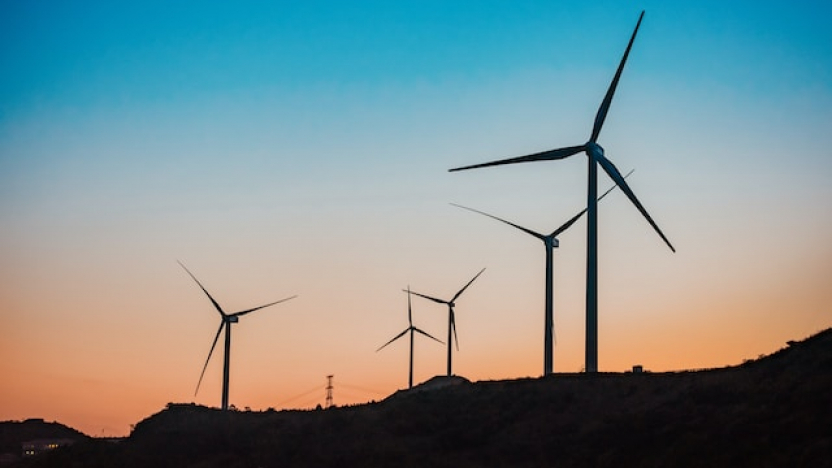Mechanical patents and sufficiency of disclosure in the EU

The Boards of Appeal of the European Patent Office (EPO) recently ruled in a case concerning sufficient disclosure for a patent application related to wind turbines. Robert Balsters examines the decision and what it means for mechanical patents.
In T 0500/20, the EPO’s Boards of Appeal discussed sufficiency of disclosure for a patent application related to wind turbines. The appellant (opponent) attacked the patent for lack of insufficient disclosure; specifically based on failure of the method to detect and dampen edgewise oscillations of the rotor blades in a frequency range close to the eigenfrequency of certain wind turbine parts.
- The opponent argued that the detection means would not be able to always accurately detect the edgewise oscillations.
- When the frequency of the edgewise oscillations is close to a resonance frequency of some other component of the turbine, a resonating component could distort the detection of the edgewise oscillation.
- Thus, the opponent concluded that there was a non-working embodiment so that the invention would not be sufficiently disclosed across the entire breadth of the claim.
- This approach, across the entire breadth of the claim, is developed mainly in the field of chemistry.
Mechanical patents and breadth of claim
According to the decision, the opponent objects, for both claim 1 and claim 11, that the invention cannot be carried out due to a contradiction of claim features. The claim requires a change in the nacelle yaw position while the turbine is idle, the latter in the opponent’s view meaning that no operation at all (including the change in nacelle yaw position) is possible.
However, the Board finds that such a contradiction neither exists in the claim language nor in the accompanying description. The term "idling" is generally understood as meaning "to run while disconnected from load or out of gear, so that it performs no external or useful work" (OED). In the field of wind turbines this simply means that the turbine runs but without generating power, normally when not coupled to the power grid. The skilled person, an engineer designing and developing wind turbines, will have no difficulty whatsoever understanding the term either in claim context or in the description. Indeed, this understanding is confirmed by the explicit statement in the claim, an idling power producing situation of said wind turbine in relation to a utility grid. Other operations, like nacelle yaw change, are not required to be suspended to meet this claim feature. Thus, the argument that there would be some "contradiction" is a spurious one.
Thus, the Board did not consider that this meant the invention was insufficiently disclosed, remarking that: “Isolated cases of non-working or not ideally working embodiments are of no importance for the issue of sufficiency in the light of the large number of conceivable and realisable alternatives indicated in the description.”
A test misapplied to mechanical patents?
The Board further placed the general comment that it was unfortunate that an approach for assessing sufficiency of disclosure was misapplied in the field of mechanics, as the approach is developed mainly in the field of chemistry for inventions where a central aspect of the claimed invention is a range of compositions or of parameter values.
There it is important that an effect associated in the patent with the range is plausible or plausibly demonstrated across the whole breadth of the claimed range (leaving aside issues of proof of plausibility, the subject of current referral G2/21). Otherwise, the claimed invention would be insufficiently disclosed, because the effect is not plausible across the whole breadth of the range.
Basing an argument of insufficiency on this approach is inappropriate for claimed inventions that do not involve a range of parameter values or compositions and can be rejected offhand for that reason. This is especially the case where, as in the present case, an invention is directed at a broadly defined concept expressed in terms of generic structural or functional features of an apparatus or of a method.
Demonstrating inefficiency in mechanical patents
The Board further mentioned that it was a pity to see this happen more and more often in mechanics. In mechanics, it is not enough to demonstrate insufficiency by showing an example falling within the terms of the claim that does not work because it does not achieve the claimed effect fully or at all.
The Board stated that, to successfully argue insufficiency in a case such as the present case, a very high burden of proof applied: “The party must demonstrate through cogent argument based on the underlying principles, if necessary supported by evidence, that the claimed concept does not work, because it does not achieve the desired effect in any measure or indeed is counter to the laws of nature. Or, they must demonstrate that the disclosure lacks information on an important aspect of the claimed invention, without which the skilled person cannot realize the claimed invention without undue burden” (reasons 3.6).
Overall, the decision T 0500/20 is important because it provides clarification on the sufficiency of disclosure requirement for patentability of mechanical patents, particularly in the context of inventions directed at generic structural or functional features of an apparatus or method. It provides guidance to patent practitioners and applicants on how to draft and prosecute patent applications that meet the sufficiency of disclosure requirement, and also provides insight into the standards that are applied by the EPO when assessing the patentability of such inventions.
For further insight or advice on the patentability of mechanical patents, speak to your Novagraaf attorney or contact us below.
Robert Balsters is a European, French and Swiss Patent Attorney and Director of the Electronics and IT Patent Department at Novagraaf.